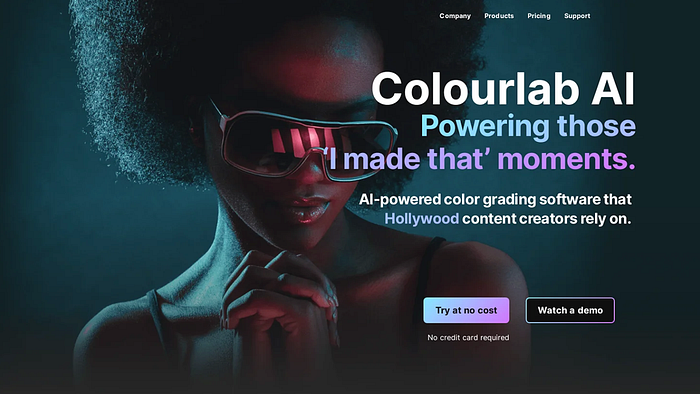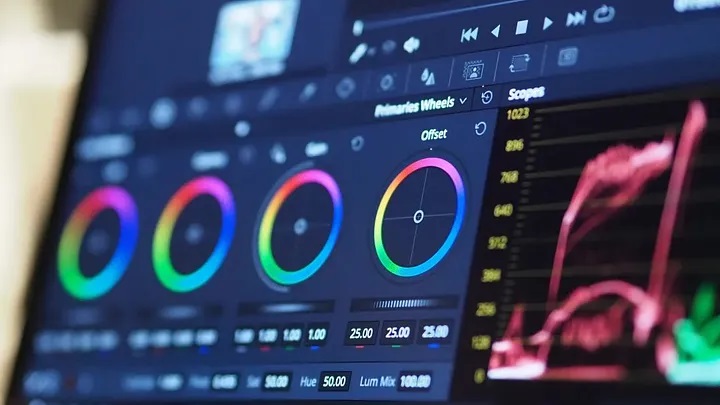In the ever-evolving filmmaking landscape, the advent of digital technology has revolutionized the way movies are created, captured, consumed, and curated. As more movies are being captured using digital cameras, post-production workflows have undergone significant transformations, with one crucial aspect standing out: color grading. Colorists; the magicians behind the scenes, have experienced a remarkable shift in their roles and responsibilities.
Very recently, Artificial Intelligence (AI) has permeated various industries, revolutionizing the way everyday tasks are accomplished and unlocking new possibilities. AI has emerged as a disruptive or transformative force or both in various aspects of filmmaking. One area where AI is making great strides is in color grading. Traditionally a labor-intensive and time-consuming process, color grading has seen a transformation with the introduction of AI-powered tools. Let us explore the concept of AI in film color grading, its implications for the industry, and the benefits if any it offers to filmmakers and colorists.
Understanding AI in Film Color Grading
AI-powered color grading systems leverage machine learning algorithms to analyze and understand the visual elements of a film. Usually, color grading involves manual adjustments made by skilled Colorists to enhance the visual aesthetics of a film/video. However, with AI, algorithms can analyze vast amounts of data, learn from existing color grading styles, and automatically apply adjustments to achieve desired looks. AI can replicate the techniques of renowned colorists, allowing filmmakers to experiment with different styles quickly.
These systems can automatically detect and track objects, faces, and landscapes, and make decisions based on the desired creative intent. From the Automatic Color Match and Relighting tool in DaVinci Resolve to the Grid Warp and the Perspective Tracker in BaseLight and even the FireFly AI tool by Adobe, Color grading software companies have introduced AI tools over the years. And then there are stand-alone AI coloring tools such as ColourLab AI, Fyim AI, and much more. Tools that provide Color Management, Color Matching, and even Look Replication capabilities.

The Benefits of AI in Film Color Grading
AI brings numerous advantages to the film color grading process. Firstly, it can increase efficiency by automating repetitive tasks. Colorists can focus on more creative aspects of their work, such as interpreting the director’s vision and establishing a unique visual language for a film. AI tools can handle basic adjustments, leaving colorists with more time to experiment, iterate, and fine-tune their aesthetic choices.
Secondly, AI can facilitate consistency across multiple shots and scenes. One of the most time-consuming processes in color grading is shot matching especially across materials from different digital cameras or varying exposure. Maintaining visual continuity is a critical aspect of storytelling, and AI tools can analyze the overall color palette of a film and ensure a cohesive look is achieved throughout. This consistency is also particularly valuable in large-scale productions with extensive visual effects, where maintaining a unified aesthetic is crucial.
Furthermore, AI empowers filmmakers to explore and experiment with different color grading styles more rapidly. By leveraging AI’s ability to learn from existing styles and preferences, filmmakers can apply various looks to a shot and assess their impact quickly. This accelerated experimentation process allows for more creative exploration and fosters a collaborative environment between colorists, directors, and cinematographers.
The Evolving Role of Film Colorists
With the integration of Artificial Intelligence in film color grading, the role of colorists is evolving. While the AI tools available today automate certain technical aspects of color grading, it does not replace the artistic sensibilities and creative decision-making of colorists. Colorists are still indispensable in understanding the director’s vision, interpreting the emotional nuances of a scene, and translating them into a visual language.
Instead of focusing solely on manual adjustments, colorists now become creative directors of these AI tools. They guide the AI system, curate the learning process, and fine-tune the output to align with the intended narrative and aesthetic choices. Colorists possess the knowledge and expertise to navigate the delicate balance between technical accuracy and artistic expression, ensuring that AI tools are applied with precision and nuance.

Challenges and Ethical Considerations
While AI presents significant advantages in film color grading, it also raises challenges and ethical considerations. One concern is the potential loss of employment opportunities for traditional colorists. As AI tools become more wildly available and more sophisticated, there is a possibility that certain routine tasks may be fully automated, reducing the need for manual adjustments. This concern is valid but, it is crucial to recognize that AI is a tool that complements and augments human creativity rather than replacing it entirely.
Moreover, the reliance on these tools raises questions about algorithmic bias and the perpetuation of existing stylistic norms. For example, a school of thought believes there is already too much “Teal and Orange” look used in films/videos today. If AI systems are trained solely on existing color grading styles, they may reinforce certain biases and limit the exploration of new and innovative looks. It is vital for colorists and filmmakers to strike a balance between leveraging AI’s capabilities and maintaining creative diversity and artistic experimentation.
Furthermore, some will argue what is the role of the artist if these tools can learn and be better over time. Where does art start and science end? How can a colorist claim authorship on a project if AI tools are used extensively in the development of looks for the project? These and many more questions we will have to answer with open minds as professionals working in this industry. In my opinion, the Colorist Society can spearhead this discussion.
Conclusion; Embracing the Future
As AI continues to advance and permeate the film industry, film colorists must embrace the possibilities and adapt to this new landscape. Rather than perceiving AI as a threat, colorists should view it as a powerful tool that enhances their creative potential. Since the pandemic, the volume of film/video content created and consumed online has drastically increased. By collaborating with AI systems, colorists can cut in half the time spent on a project, explore uncharted territories, push the boundaries of visual storytelling, and elevate the cinematic experience.
The advent of AI in film color grading has brought both opportunities and challenges for colorists in the digital film era. While these tools automate certain technical aspects, the creative decision-making and artistic sensibilities of colorists remain indispensable. By embracing AI as a collaborative tool, colorists can continue to shape the visual aesthetics of films, interpret directorial visions, and evoke emotions through the power of color. As the industry moves forward, it is vital to strike a balance between technological advancements and preserving the diversity and innovation in film color grading.
The future promises exciting possibilities as film colorists leverage AI to create visually captivating and emotionally resonant cinematic experiences. Let’s make magic.

